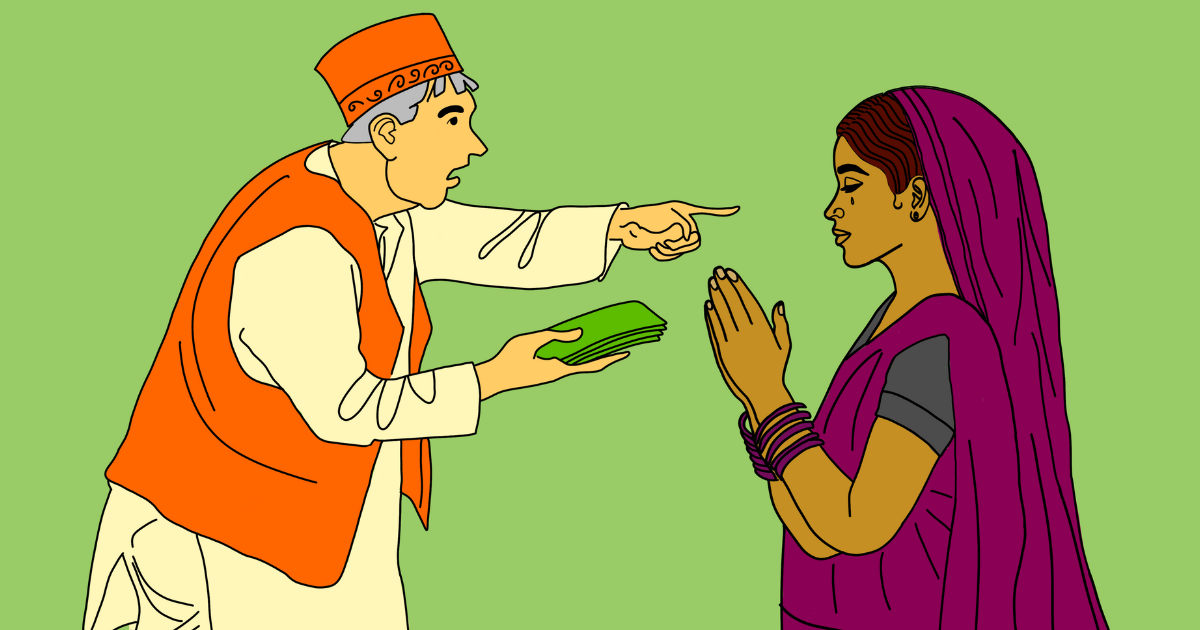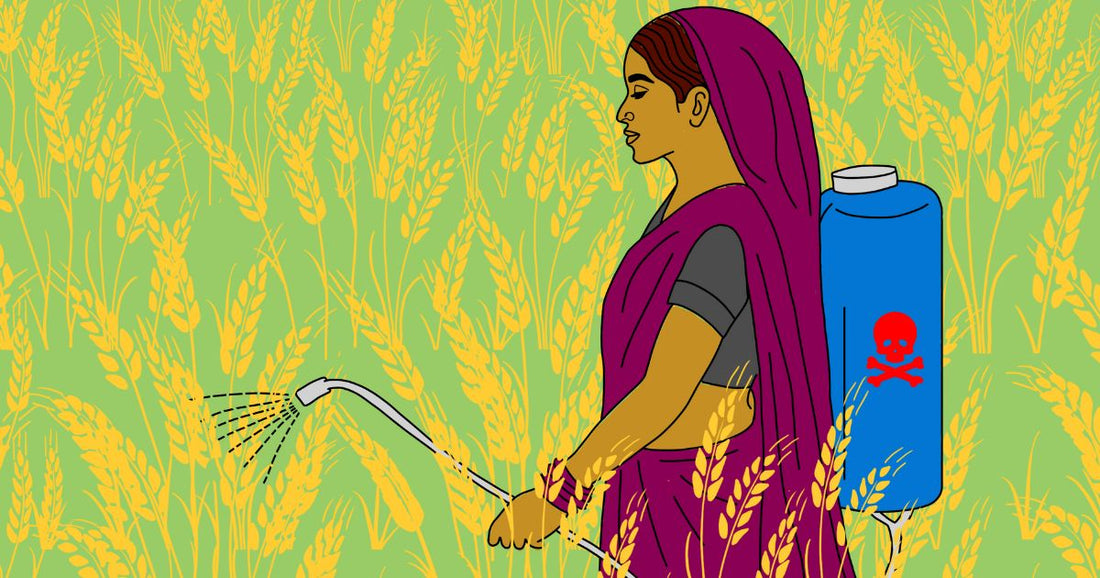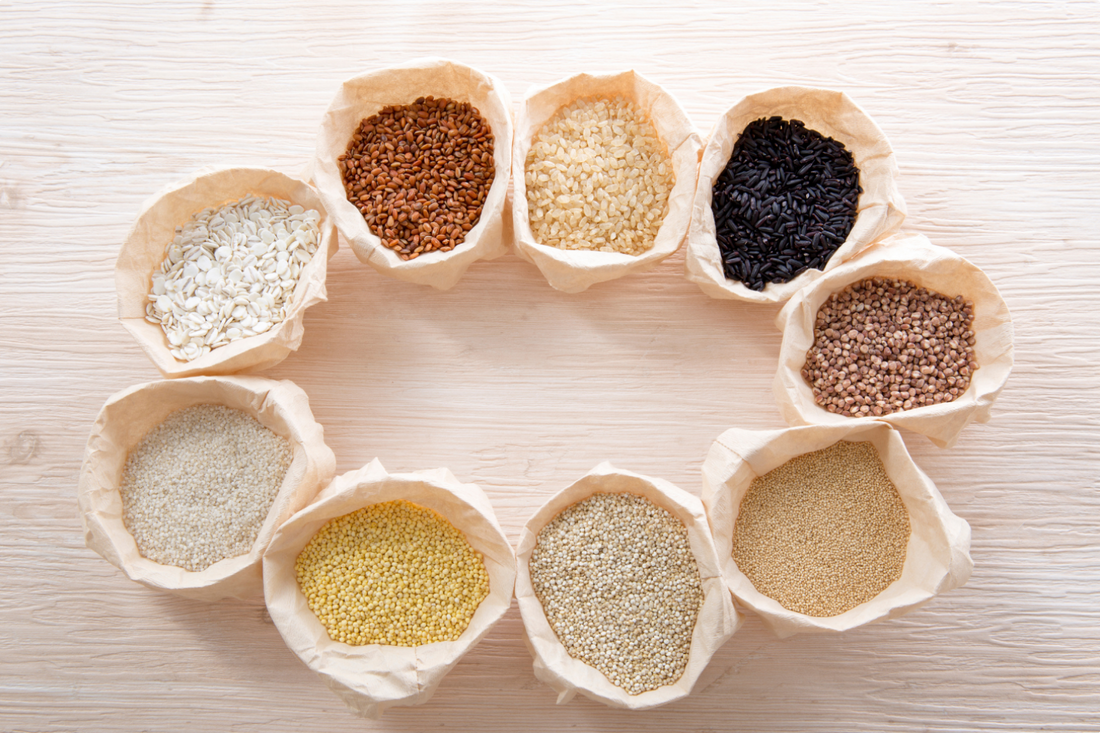Mira Bai does not remember the exact year she switched to the wheat-soy cycle. It was sometime in the late eighties, when her friends and neighbors, in the Adivasi district of Dewas in Madhya Pradesh, had begun adopting these crops.
It was a miraculous cycle, they said: high-yielding and remunerative. Better than the ragged cotton, millets, and pulses she had been growing on her 2.5 acres of rainfed, semi-arid land. So she followed the current, tore out the hardy roots of jowar and tur, and planted soy in the monsoon followed by wheat in the winter.
Hungry and vulnerable, these crops needed fertilizers and pesticides, many of whose names she couldn’t even pronounce. She didn’t have to leave the village to purchase them though. The local moneylender, whose shop stood prominently, had been keenly watching these changes. He had begun stocking pesticides and fertilizers, calling them dawai (medicine) and sarkari khaad (government manure) respectively.
In a village where the intimidating bank-with its demands for documentation and collateral-remained out of reach, the moneylender assumed an outsized role. Though he lent at very high interest rates, sometimes upwards of 60 percent, he was always available and approachable.
Mira Bai had in fact recently borrowed ₹5,000 to marry her daughter off.
The moneylender, deeply attuned to the social rhythms of the village, had embedded himself into its ecosystem. He knew his debtors all too well, and sold inputs whose prices he had marked up, on credit too. He was aware that the nearest mandi, the formal regulated market, was 80 kilometres away. Renting a tractor would eat into farmers’ profits. There was also the ever present risk of the grain getting damaged en route. So, he would coax them to sell to him instead. In the absence of reliable price information, he quoted rock-bottom rates. To squeeze out even more, he used faulty weighing scales.
Mira Bai and her friends knew they could get better prices at the mandi. They were well aware of the moneylender’s nefarious practices. Mira Bai also lived in constant fear of losing her only asset, land, to repay the ever-mounting interest. Her friend had already been forced to sell hers at a throwaway price to the same moneylender and move to the city. But she also had to weigh the risks. The moneylender, for all his predatory terms, at least showed up.
What we have here is a classic case of interlocked markets.
It is a system where a single actor provides credit, inputs and market access, making each transaction contingent on the others. No paperwork is needed. The obligation is baked into the rhythm of the farming year. Prices are adjusted. Debts are rolled over. New credit is offered. When farmers are unable to repay, their only asset, land, is taken over and at prices well below prevailing market rates. Worse still, their labour is exploited too, with the wages suppressed and the work, undervalued.
Mira Bai never steps outside the orbit of this monopoly. She cannot.
It is the convoluted architecture of dependency that bleeds farmers like her. By 2018, the average agricultural household in India, like Mira Bai’s, was carrying a debt burden of over ₹1 lakh, while earning just ₹77,000 annually from cultivation.
There is no single exit from this trap. No silver bullet.
What farmers like Mira Bai need is a new kind of ecosystem. One in which institutions are rebuilt with the farmer, especially the smallholder woman farmer, at the centre. Where credit is fair, timely, and accessible. Where agriculture is sustainable. Where markets are fair and are not held hostage by proximity and power.
That is the work we at Safe Harvest, alongside our partners, have set out to do. To reinvigorate the institutions that once served farmers. And to build new ones where none exist. Because freedom for farmers like Mira Bai does not come from one good season. It comes from finally breaking the labyrinth that wraps itself around season after season.
In the coming pieces, we will share how, through our own experience, sustainable agriculture, fair credit and accessible markets can work together to build a truly farmer-first ecosystem, one held together by the power of collective action.
See you around…



